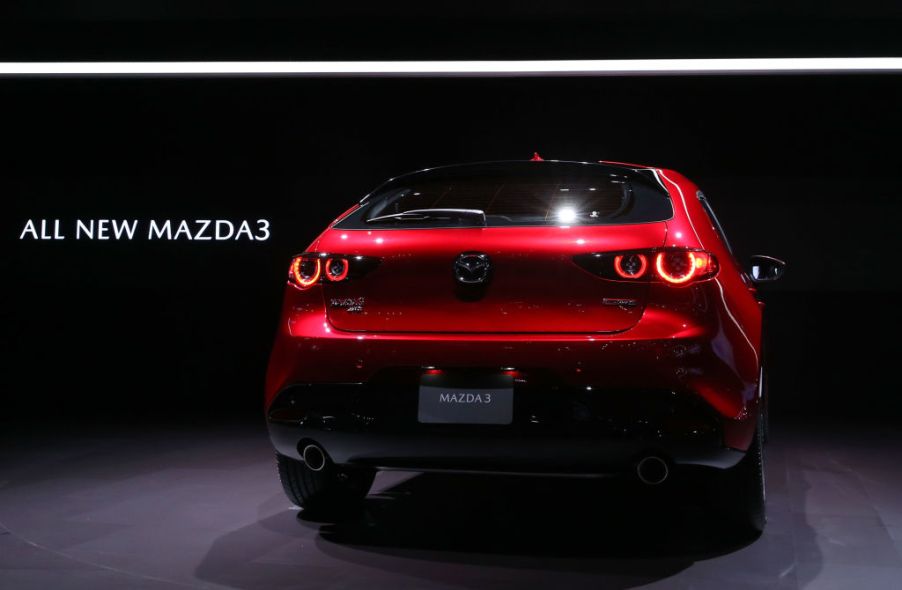
2020 Mazda3 Hatchback: What You Should Know About That Big Blind Spot
The 2020 Mazda3 hatchback is getting pretty stellar reviews — Edmunds lists it as No. 7 in small hatchbacks, and Car and Driver gives the new Mazda3 lineup a solid four out of five rating. If you’ve been considering purchasing this little hatchback, though, you may have heard of its one major downside: incredibly poor rear visibility. A Kelley Blue Book reviewer reports that this shouldn’t necessarily deter you, but there are still a few things you should know before buying.
The Mazda3 hatchback’s giant blind spot
While the Mazda3 hatchback has a sleek, appealing appearance, this may well come at the cost of usability. Its C-pillars — the two rear panels supporting the car’s roof — are pretty huge and end up creating a giant blind spot from the driver’s seat.
In fact, this hatchback’s visibility completely tanked between the 2018 and 2019 models, falling by approximately 50 percent. This dip gives it the worst visibility in the current compact hatchback market. The closest point on the road that you’ll be able to see through the rear window is 97 feet back — an abysmally long distance that puts the hatchback’s rear visibility even lower than several giant SUVs. This number is also drastically higher than on the 2018 Mazda3 hatchback, which has rear visibility of 67 feet.
The large size of the C-pillars also drastically reduces peripheral vision. Drivers only have 104-degree rear visibility, compared to 121-degree rear visibility in the 2018 Mazda3 hatchback.
How much of a problem is it?

If you’ve had your heart set on the new hatchback, the blind spot doesn’t necessarily need to be a deal-breaker. According to Kelley Blue Book, it actually doesn’t take too long to adjust to the restricted view. Blind-spot monitoring comes standard on the 2020 model as does a backup camera, so you’ll have built-in assists to help you manage the inconvenience.
The main issue caused by the blind spot is increased difficulty parallel parking. The C-pillars make it essentially impossible to gauge when to turn while reversing into a spot, and the standard backup camera isn’t much help as it doesn’t show the sides of the car. If you don’t frequently parallel park, though, you may decide that the reduced rear visibility is something that you can put up with in exchange for everything else the Mazda3 has to offer.
Why people still love the Mazda3 hatchback
One of the main reasons people love this car is the incredible amount of storage space it offers while still being compact and garage-friendly. With the rear seats folded down, the hatchback features a whopping 47.1 cubic feet of cargo space, so it’s perfect if you’ll occasionally need extra space but you still want the convenience of a smaller vehicle.
Additionally, the Mazda3 handles well and is overall fun to drive. According to Car and Driver, it’s an agile car that remains comfortable even on bumpy roads. Despite its affordable price tag, the materials within the cabin feel premium, and it has supportive seating and an intuitive infotainment system.
The 2020 Mazda3 also received a five-star crash-test rating from NHTSA. It comes with plenty of excellent safety features, including automated emergency braking, lane departure warning, and rear cross-traffic alert.
Overall, while the Mazda3’s blind spot is certainly an issue, it doesn’t necessarily need to deter buyers who are looking for a high-quality compact hatchback. The little car packs a serious punch and offers an overall positive driving experience. If you frequently parallel park or are otherwise worried about visibility issues, you may want to look for something else, but otherwise, it’s worth giving the 2020 Mazda3 hatchback a chance.


